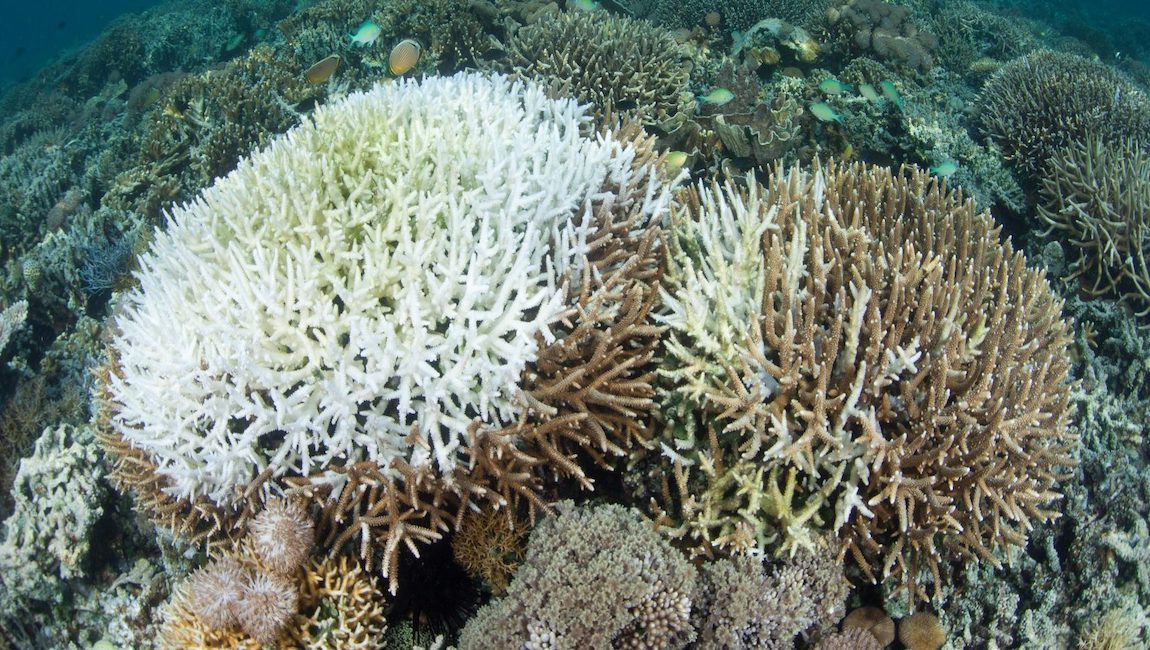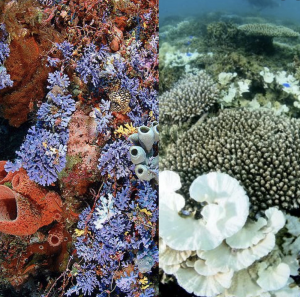
What is Coral Bleaching?
Coral reefs are famous for their brilliant colors. What many people don’t realize is that the coral themselves are white. They get those fabulous colors via a symbiotic relationship with tiny plants called zooxanthellae that usually live inside the coral. Like all plants, zooxanthellae use photosynthesis to turn light to chlorophyll, which is responsible for coral’s green and brown colors. This process also produces carbohydrates (which the coral uses as food) and oxygen. The brighter the coral, the more oxygen is being produced.
Coral also produces protein pigments referred to as “chromoproteins”. These pigments can be red, purple, or blue, and are often what’s responsible for making the white corals appear colorful. These pigments play a major role in the health and resilience of the corals by protecting them from excessive stress. There are also fluorescent pigments in cyan, green, yellow or red, that glow when viewed with certain types of lights.
The problem is that coral are picky. They’ve evolved to live in a very specific environment, especially when it comes to water temperature. Not all coral are the same, and they can survive some temperature fluctuations. However, it’s safe to say that they do best in water temperatures between 20–32° C (68–90° F).

When coral gets stressed (stress factors are things like water that is too warm, disease, pollution, or changes in the amount of salt in the water), they expel the algae. No algae, no color. Sometimes, this is a temporary situation, and the coral can recover the algae. If that happens, the coral recovers. If not, the coral dies.
Coral bleaching is affecting coral all over the world. A study of the Great Barrier Reef off the coast of Australia shows that as much as 93% of coral there is affected by some level of bleaching.
Sources:
- https://www.nature.org/ourinitiatives/urgentissues/oceans/coral-reefs/coral-reefs-coral-bleaching-what-you-need-to-know.xml
- https://www.thespruce.com/coral-bleaching-2924018
- https://coral.org/coral-reefs-101/coral-reef-ecology/what-do-coral-reefs-need-to-survive/
- http://www.cnn.com/2016/04/20/asia/great-barrier-reef-coral-bleaching/index.html
Curriculum Reference Links
- Biological World / Building Blocks / 1: Students should be able to investigate the structures of animal and plant cells and relate them to their functions
- Biological World / Energy / 7: Students should be able to describe respiration and photosynthesis as both chemical and biological processes; investigate factors that affect respiration and phot

